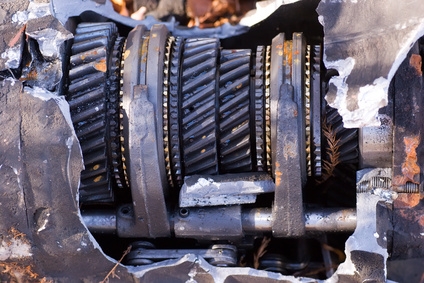
Your gearbox produces a greater torque than that which enters it. The crankshaft's flywheel, which the engine's cylinders rotate, applies a torque to the gearbox's primary gear. The gear then turns a smaller counterpart with fewer teeth, rotating it with a greater speed. The car's drive shafts then carry this increased torque from the transmission to the rotors of the wheels, giving them enough force to drive the vehicle forward.
Multiply the force applied to the box's first gear by the first gear's radius. If, for instance, 2,500 Newtons act on a gear whose radius measures 0.5 meters: 2,500 x 0.5 = 1,250 Newton meters.
Divide the radius of the first gear by that of the second. If the second gear's radius measures 0.1 meters: 0.5 / 0.1 = 5. The gearbox's torque ratio is 5:1, and its torque multiplication factor is 5.
Multiply the last two steps' answers: 1,250 x 5 = 6,250 Newton meters. This is the gearbox's torque.